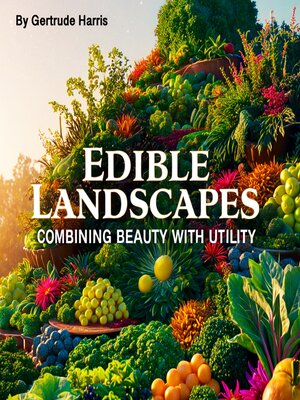
Sign up to save your library
With an OverDrive account, you can save your favorite libraries for at-a-glance information about availability. Find out more about OverDrive accounts.
Find this title in Libby, the library reading app by OverDrive.



Search for a digital library with this title
Title found at these libraries:
| Library Name | Distance |
|---|---|
| Loading... |
Edible landscapes are a growing trend that merges the best of both worlds: beauty and utility. By incorporating edible plants into traditional ornamental gardens, you can create a space that is not only visually pleasing but also functional. This approach allows you to enjoy the fruits, vegetables, and herbs that you cultivate while simultaneously enhancing your outdoor living space. It's a way to transform your garden into something that nourishes both the body and the soul, offering an inviting atmosphere where every corner has a purpose.
The idea of combining aesthetics with food production may seem like a modern trend, but it has roots in ancient cultures where gardens were designed to provide sustenance, medicine, and beauty all in one. Today, edible landscapes are gaining popularity as people seek more sustainable ways to live, reduce their environmental footprint, and reconnect with nature. These gardens offer an opportunity to grow your own food, cut down on grocery bills, and reduce the reliance on store-bought, often over-processed, food.
Creating an edible landscape is more than just planting a few herbs in the garden or adding fruit trees alongside flower beds. It involves a thoughtful design process, one that takes into consideration not only the practical needs of the plants but also how they fit into the larger aesthetic picture. The goal is to strike a balance between form and function, so that every plant serves a dual purpose—contributing both to the overall design and to your kitchen.
There are numerous benefits to edible landscaping. First and foremost, it fosters self-sufficiency, allowing you to harvest fresh produce right from your backyard. Edible gardens also promote biodiversity, as they often include a variety of plants that attract beneficial insects and wildlife. Additionally, they help to reduce food miles, making your meals more sustainable.







